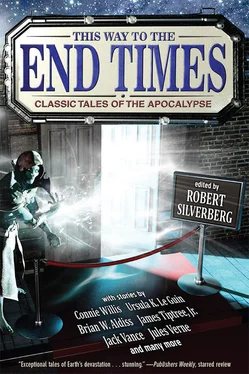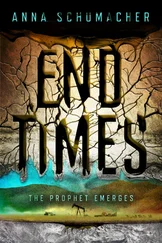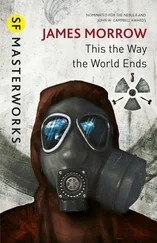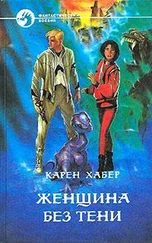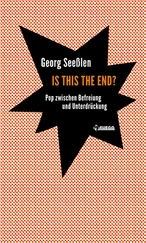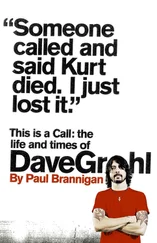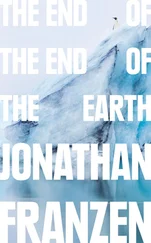Floods are not the only apocalypses that ancient myths offer us. The Norse tales give us a terrible frost, the Fimbulwinter, in which all living things die except a man and a woman who survive by hiding in a tree; they follow the usual redemptionist course and repeople the world, but then comes an even greater cataclysm, Ragnarök, the doom of the gods themselves, in which the stars fall, the earth sinks into the sea, and fire consumes everything—only to be followed by yet another rebirth and an era of peace and plenty. And then there is St. John’s Book of Revelation in the Christian tradition, in which the wrath of God is visited upon the Earth in a host of ways (fire, plague, hail, drought, earthquakes, flood, and much more), leading to the final judgment and the redemption of the righteous. The Aztecs, too, had myths of the destruction of the world by fire—several times over, in fact—and so did the Mayans. It was not very long ago, as I write this, that much popular excitement was being stirred by an alleged Mayan prediction that the next apocalypse was due in 2012. Perhaps there was an error in translation from the Mayan glyphs, though, because we appear to have come through that one intact.
Since apocalyptic visions are nearly universal in the religious literature of the world, and probably always have been, it’s not surprising that they should figure largely in the fantasies of imaginative storytellers. Even before the term “science fiction” had been coined, stories of universal or near-universal extinction brought about not by the anger of the deities but by the innate hazards of existence were being written and achieving wide popularity. Nineteenth-century writers were particularly fond of them. Thus we find such books as Jean-Baptiste Cousin de Grainville’s The Last Man, or Omegarus and Syderia (1805) and Mary Shelley’s The Last Man (1826), which was written under the shadow of a worldwide epidemic of cholera that raged from 1818 to 1822. Edgar Allan Poe sent a comet into the Earth in “The Conversation of Eiros and Charmion” (1839). The French astronomer Camille Flammarion’s astonishing novel of 1893, La Fin du Monde, or Omega in its English translation, brought the world to the edge of doom—but only to the edge—as another giant comet crosses our path. H. G. Wells told a similar story of near-destruction, almost surely inspired by Flammarion’s, in “The Star” (1897). In his classic novel The Time Machine (1895) Wells had already taken his time traveler to the end of life on Earth and beyond. (“All the sounds of man, the bleating of sheep, the cries of birds, the hum of insects, the stir that makes the background of our lives—all that was over.”) Another who must certainly have read Flammarion is his compatriot Jules Verne, who very likely drew on the latter sections of Omega for his novella, “The Eternal Adam” (1905). Here Verne espouses a cyclical view of the world: Earth is destroyed by a calamitous earthquake and flood, but the continent of Atlantis wondrously emerges from the depths to provide a new home for the human race, which after thousands of years of toil rebuilds civilization; and we are given a glimpse, finally, of a venerable scholar of the far future looking back through the archives of humanity, “bloodied by the innumerable hardships suffered by those who had gone before him,” and coming, “slowly, reluctantly, to an intimate conviction of the eternal return of all things.”
The eternal return! It is the theme of so much of this apocalyptic literature. That phrase of Verne’s links his story to the core of Flammarion’s own belief that our own little epoch is “an imperceptible wave on the immense ocean of the ages” and that mankind’s destiny is, as we see in Omega ’s closing pages, to be born again and again into universe after universe, each to pass on in its turn and be replaced, for time goes on forever and there can be neither end nor beginning.
Rebirth after catastrophe is to be found, also, in M. P. Shiel’s magnificent novel The Purple Cloud (1901), in which we are overwhelmed by a mass of poisonous gas, leaving only one man—Adam is his name, of course—as the ostensible survivor, until he finds his Eve and life begins anew. No such renewal is offered in Frank Lillie Pollock’s terminally apocalyptic short story “Finis” (1906), though, which postulates a gigantic central star in the galaxy whose light has been heading toward us for an immense span of time and now finally arrives, so that “there, in crimson and orange, flamed the last dawn that human eyes would ever see.” James Elroy Flecker (1908) had the entire human race wearying of its existence and committing mass suicide.
There is ever so much more. Few readers turn to apocalyptic tales these days for reassurance that once the sins of mankind have been properly punished, a glorious new age will open; but, even so, the little frisson that a good end-of-the-world story supplies is irresistible to writers, and the bibliography of apocalyptic fantasy is an immense one. Garrett P. Serviss’s The Second Deluge (1912) drowns us within a watery nebula. G. Peyton Wertenbaker’s “The Coming of the Ice” (1926) brings the glaciers back with a thoroughness that makes the Norse Fimbulwinter seem like a light snowstorm. Philip Wylie and Edwin Balmer’s When Worlds Collide (1933) tells us of an awkward astrophysical event with very unpleasant consequences for our planet. Edmond Hamilton’s “In the World’s Dusk” (1936) affords a moody vision of the end of days, millions of years hence, when one lone man survives and “a white salt desert now covered the whole of Earth. A cruel glaring plain that stretched eye-achingly to the horizons . . . .” Robert A. Heinlein’s story “The Year of the Jackpot” (1952) puts the end much closer—1962, in fact—when bad things begin to happen in droves all around the world, floods and typhoons and earthquakes and volcanic eruptions worthy of the Book of Revelation, culminating in a lethal solar catastrophe. J. T. McIntosh’s One in Three Hundred (1954) also has the sun going nova, at novel length. And, of course, the arrival of atomic weapons in 1945 set loose such a proliferation of nuclear-holocaust stories that it would take many pages to list them all.
MODERN-DAY WRITERS CONTINUE TO FIND literary rewards in dancing through the apocalypse. A wide assortment of such jolly visions of ultimate disaster is presented here, along with the earlier classics by Verne, Pollock, and Flecker. Among them are Brian W. Aldiss’s view of a world flattened beneath the enormous body of an alien invader, Ursula K. Le Guin’s lively take on the theory of continental drift, Dale Bailey’s depiction of the flood to end all floods, Philip Latham’s meticulous account of the last days of our sun, and more than a dozen more.
The possible variations on the theme are endless. As Robert Frost wrote nearly a century ago,
Some say the world will end in fire,
Some say in ice.
From what I’ve tasted of desire
I hold with those who favor fire.
But if it had to perish twice,
I think I know enough of hate
To know that for destruction ice
Is also great
And would suffice.
Fire or ice, one or the other—who knows? The final word on finality is yet to be written. But what is certain is that we will go on speculating about it . . . right until the end.
—Robert Silverberg
The Eternal Adam
— JULES VERNE —
TRANSLATED BY WILLIS T. BRADLEY
EDITOR’S INTRODUCTION
JULES VERNE (1828–1905) IS UNIVERSALLY considered one of the founding fathers of modern science fiction, although in fact only a few of his sixty-odd novels can be considered to belong to that category. Certainly A Journey to the Center of the Earth, Twenty Thousand Leagues Under the Sea, From the Earth to the Moon, Off on a Comet, Robur the Conqueror, and several other Verne books must be regarded as pioneering works of science fiction. But the preponderance of his output consists of adventure novels published under the collective title of Voyages Extraordinaires and ranging through every part of the world (including some that still counted as unexplored territory in his day) and, though they are unfailingly entertaining, the scientific and speculative content of most of them is negligible.
Читать дальше
